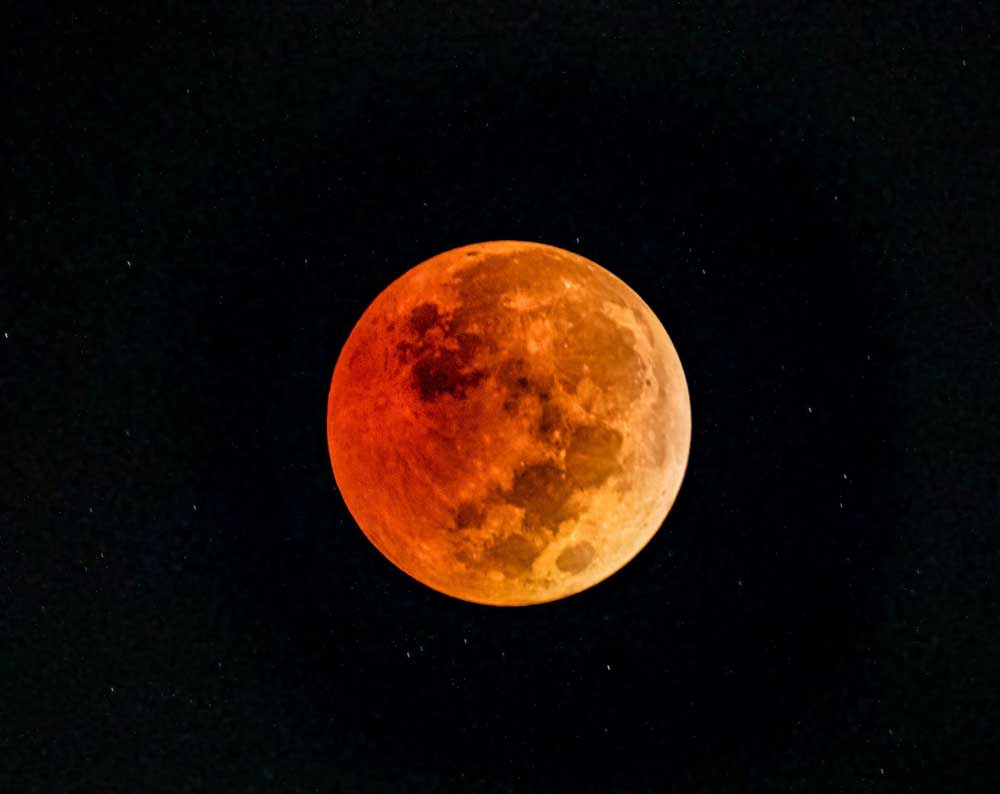Astronomical events: Several reasons to look to the sky in 2023
Published 5:35 am Sunday, January 1, 2023

- Total lunar eclipse resulting in the Blood Moon.
When it comes to astronomy, every year is a little different and every year brings its highlights to the night sky for us to marvel.
Meteor showers
Trending
This year starts with the Quadrantids meteor shower when every planet, except Mercury, will be visible in the evening sky. To see which planets are visible in the sky each night in your area, visit www.almanac.com/astronomy/planets-rise-and-set and enter your zip code.
The Quadrantids are active from Dec. 26 to Jan. 16, but they peak every year in January. While most meteor showers have a two-day peak, the Quandrantids peak is only a few hours. This year’s peak is expected to be the night of Jan. 3 between midnight and about an hour before morning twilight, when 60 to 200 Quadrantid meteors can be seen per hour under perfect conditions, according to NASA. However, it’s more likely to see about 25 per hour during this year’s shower, according to the Old Farmer’s Almanac.
According to the American Meteor Society, the moon will be 92% full on the night of Jan. 4.
“Quadrantids are also known for their bright fireball meteors. Fireballs are larger explosions of light and color that can persist longer than an average meteor streak,” according to NASA.
To view the Quadrantids, NASA recommends finding an area well away from the city or street lights during the night and predawn hours.
“Lie flat on your back with your feet facing northeast and look up, taking in as much of the sky as possible,” NASA states on its website. “In less than 30 minutes in the dark, your eyes will adapt and you will begin to see meteors. Be patient – the show will last until dawn, so you have plenty of time to catch a glimpse.”
Trending
There will be several other meteor showers this year including the Lyrids on April 22, Eta Aquarids on May 6, Delta Aquarids on July 28, Perseids on Aug. 12, Draconids on Oct. 7, Orionids on Oct. 21, Taurids on Nov. 4, Leonids on Nov. 17, Geminids on Dec. 13, and Ursids on Dec. 21. View a full calendar and best viewing times at www.almanac.com/content/meteor-shower-calendar.
It is important to note that meteor showers have peak dates that can vary by a day or two.
{iframe title=”YouTube video player” src=”https://www.youtube.com/embed/axTU7lagV48” frameborder=”0” width=”100%” height=”500”}{/iframe}
Eclipses
There will be a total of four eclipses this year, two of the moon and two of the sun. However, they won’t be visible in all parts of the world. Below are the ones you’ll be able to see in East Texas.
A lunar eclipse is when the moon enters the Earth’s shadow, preventing parts or all of the sunlight to reflect off the moon. Alternatively, a solar eclipse occurs when the moon passes in front of the sun, partially or entirely blocking its light from hitting the Earth.
The Annular Solar Eclipse will occur on Oct. 14 and be partially visible from most of North America. The annular phase is visible in a narrow path that runs through Oregon, Nevada, Utah, Arizona, New Mexico, and Texas. The eclipse begins at 10:04 a.m. central time and ends at 3:55 p.m. central time, according to the Old Farmer’s Almanac.
The next total solar eclipse to visit North America will be April 8, 2024. The duration of totality will be up to 4 minutes and 27 seconds, according to the Old Farmer’s Almanac.
Equinox and Solstice
The changing of the seasons known as Equinox and Solstice will occur on the following dates: Spring Equinox on March 20, Summer Solstice on June 21, Fall Equinox on Sept. 23, and Winter Solstice on Dec. 21.
Full moons
According to NASA, the moon has a total of eight phases including:
🌑 New Moon: The moon isn’t visible
🌒 Waxing Crescent: A thin crescent of light on the right
🌓 First Quarter: Half moon
🌔 Waxing Gibbous: Between a half moon and full moon. Waxing means it is getting bigger.
🌕 Full Moon: The moon is completely illuminated.
🌖 Waning Gibbous: Between a full moon and a half moon. Waning means it is getting smaller.
🌗 Third Quarter: Another half moon. It is the opposite half as illuminated in the first quarter moon.
🌘 Waning Crescent: Thin crescent of light on the left
At least once a month, the full moon lights up the dark sky with each of them having a name. Below are dates for full moons occurring in 2023, their names, and peak illumination times in Tyler, according to the Old Farmer’s Almanac.
Jan. 6, Full Wolf Moon: 5:09 p.m.
Feb. 5, Full Snow Moon: 12:30 p.m.
March 7, Full Worm Moon: 6:42 a.m.
April 5, Full Pink Moon: 11:37 p.m.
May 5, Full Flower Moon: 12:36 p.m.
June 3, Full Strawberry Moon: 10:43 p.m.
July 3, Full Buck Moon: 6:40 a.m.
Aug. 1, Full Sturgeon Moon: 1:33 p.m.
- Aug. 30, Full Blue Moon: 8:37 p.m. This name is due to it being the second full moon in a calendar month. The next monthly blue moon isn’t until May 31, 2026.
Sept. 29, Full Corn Moon: 4:58 a.m.
Oct. 28, Full Hunters Moon: 3:24 p.m.
Nov. 27, Full Beaver Moon: 3:16 a.m.
Dec. 26, Full Cold Moon: 6:33 p.m.
According to The Old Farmer’s Almanac, these names originated from Native Americans and the Colonials adopted many of the names.
Peak illumination times vary by location. Want to know the peak times and exact moonrise and moonset times in your location? Visit www.almanac.com/astronomy/moon-rise-and-set and enter your zip code.
Supermoons
The full moons of July, two in August, and September will be supermoons, which occur when the moon’s orbit is closest to Earth at the same time the moon is full, according to NASA. These are much brighter than ordinary full moons.
The supermoon of Aug. 30, which is also a blue moon, will be the closest and brightest full supermoon of the year, according to earthsky.org.
It certainly seems 2023 will give us several reasons to look to the sky.
For more information on the meaning of each full moon name and origin, visit The Old Farmer’s Almanac and for more general astronomical information, visit NASA.






